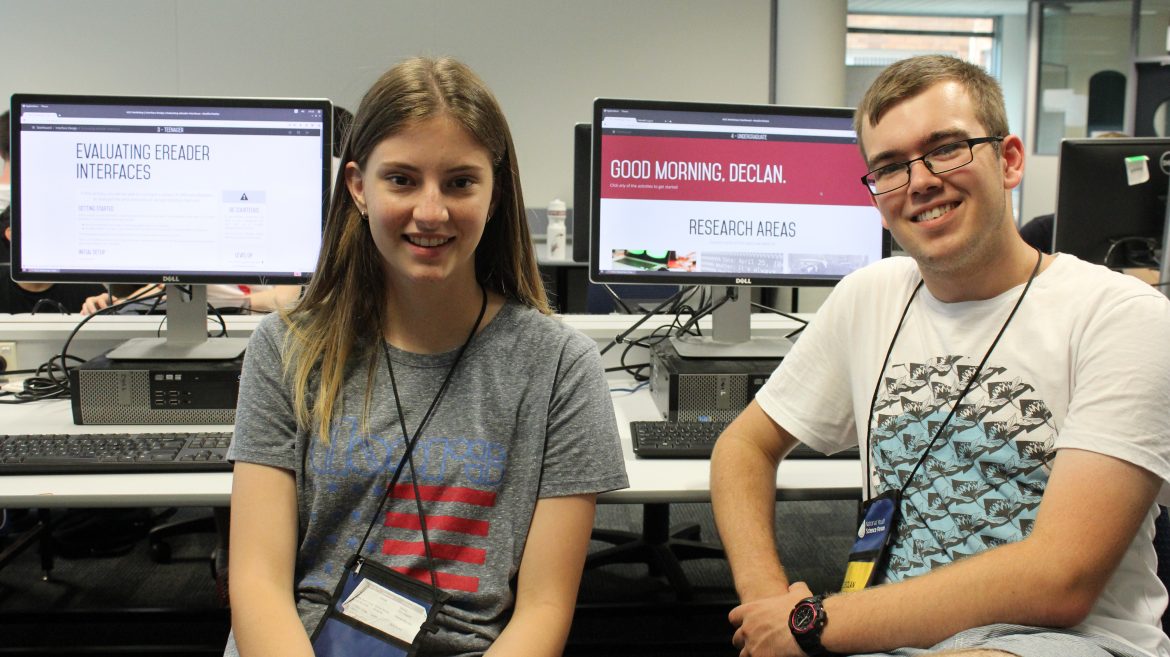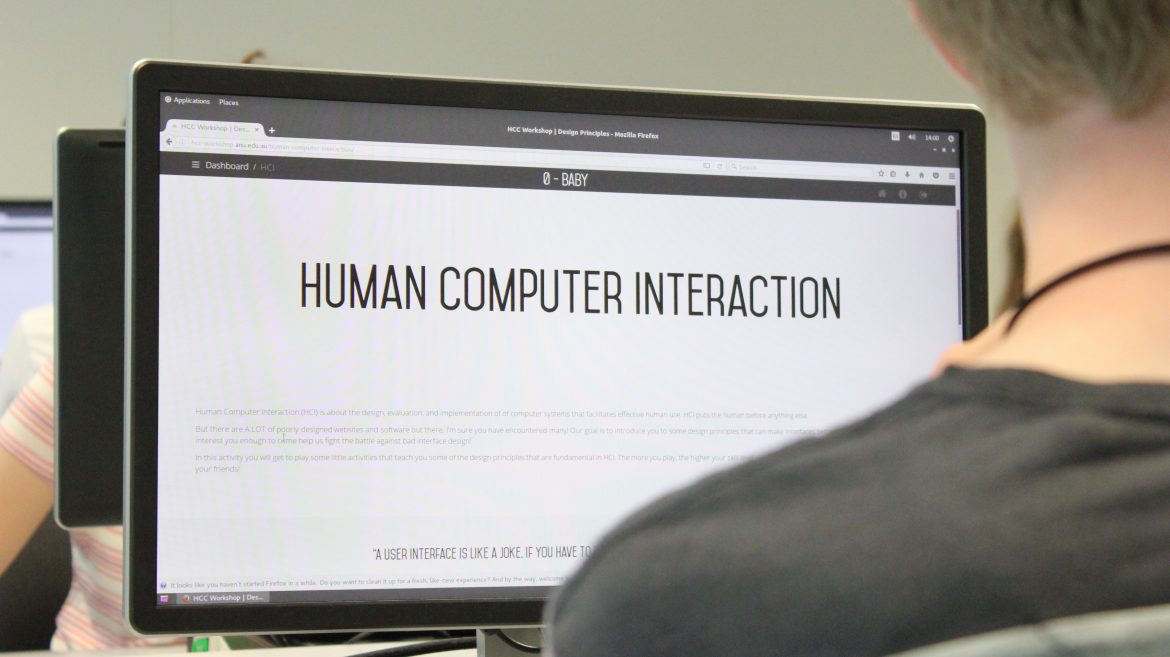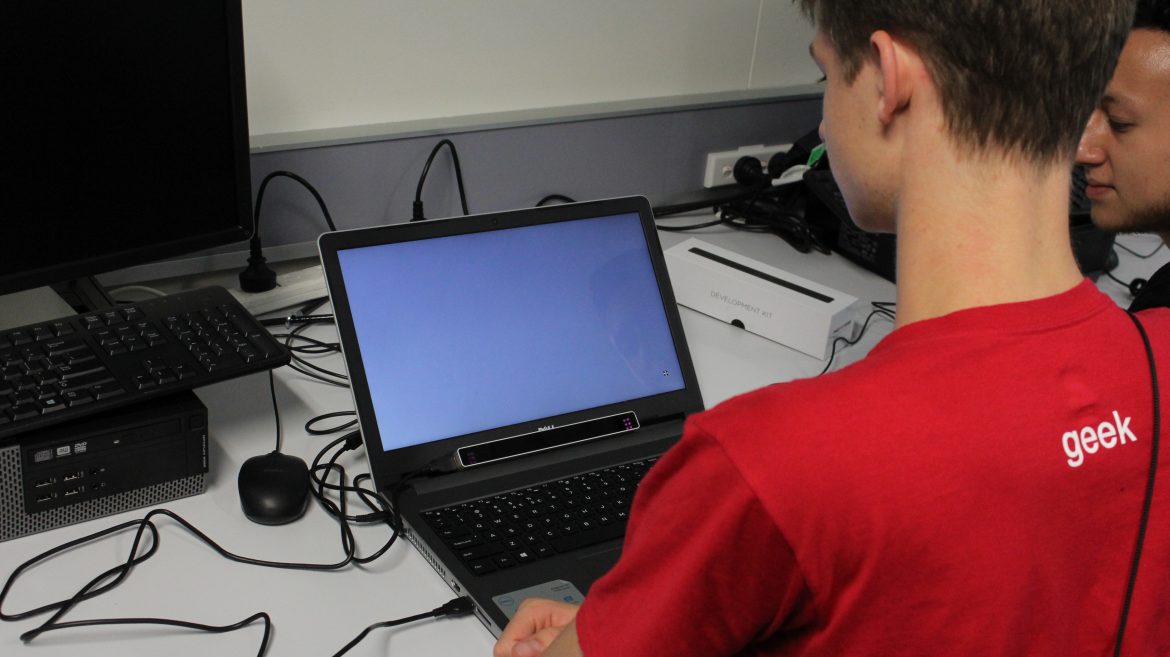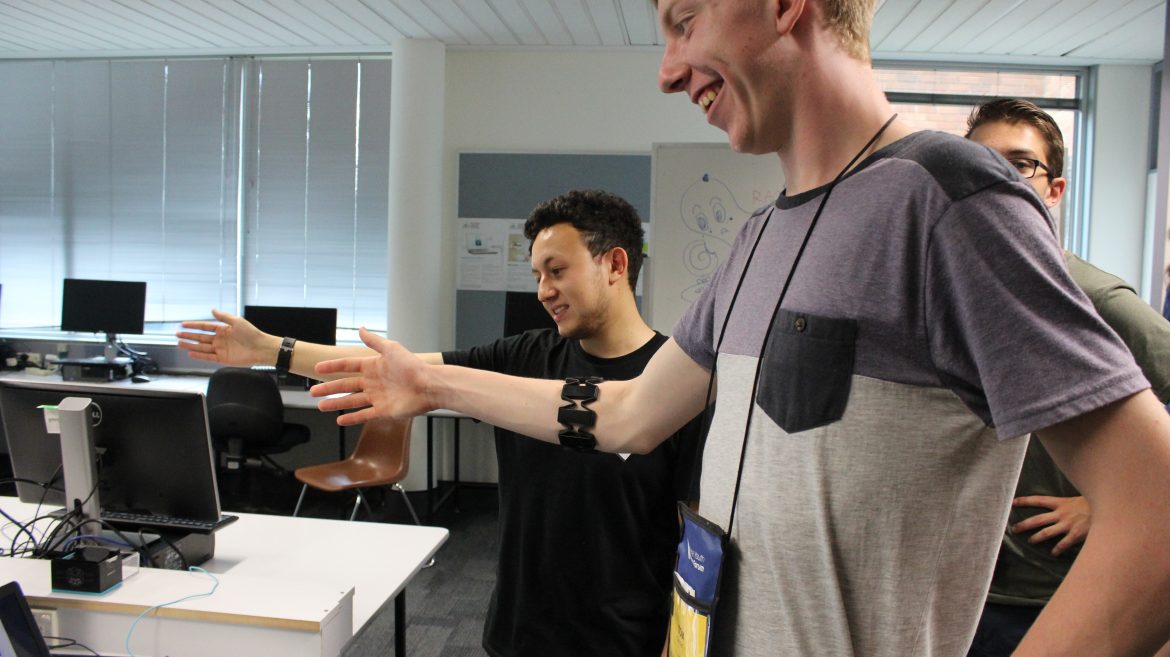By Jackson Nexhip, NYSF 2017 Session A Communications Intern and NYSF 2013 Alumnus
There are always new ways to apply the way of thinking, and there are a wide range of things that IT can apply to.

Nikola Poli (left) and Declan Rixon (right) in the lab
In Session A, NYSF 2017 participants ventured over to the Research School of Computer Science at ANU for a workshop and presentation on Human Centred Computing.
Human Centred Computing (HCC) is based around optimizing computing for people. It is concerned with the function of the computer just as much as it is concerned with ergonomics and the understanding of humans.
After a short introduction to the basics of HCC, students were free to roam around and the lab and look at some of the devices that the PhD students there had been working on.

Human Centered Computing
They had some pretty cool stuff on display, one being an eye tracking exercise through which you can navigate a computer by eye movements alone.
This technology could have an application for people who are unable to use their hands to navigate, but can also be used to learn what kind of information attracts attention on screen, and what doesn’t.
The eye gazing data can also be combined with measurements of heart rate and endodermal activity, then analysed using deep learning or neural network technology to paint a picture of how the content on the screen is making the user feel.

Eye gazing technology
This is the project of PhD student Chris from the Research School of Computer Science at ANU, who had a bit to say about career paths and life in computer science and software engineering:
“Everybody uses technology. Our graduates go off everywhere to big banks, startups and so on. There are always new ways to apply the way of thinking, and there are a wide range of things that IT can apply to.”
“My work is to research into how people use websites, read emails and so on, but the way you configure it could make it good for many things such as self-driving cars or finding a cancer tumour. The basis is the same - neural networks are able to iterate and learn by themselves.”
Another cool device they had was the Myo PowerPoint arm band, which when strapped to your forearm can monitor the electrical activity of your nerves and allow you to navigate a slideshow using hand gestures.
Double tap your thumb and index finger to go to the next slide, flick your wrist to go back, clench your fist and turn to zoom it. A built in gyroscope even allows you to use your fingertip as a laser pointer!

A very stoked Tom Wright (NYSF student) learning to navigate a PowerPoint presentation with hand gestures
The students left the lab today feeling pretty blown away I think. Myself included. The work that they’re doing here is super cutting edge and exciting, and I can’t wait for the day that I can write these articles with my eyeballs.